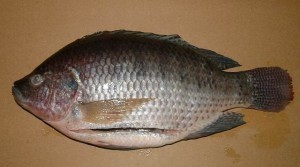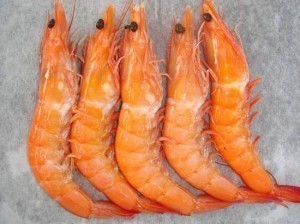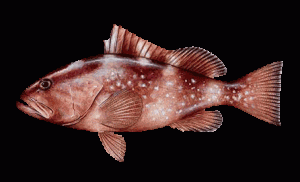Size of a Bigeye Tuna
The size of the bigeye tuna (Thunnus obesus) can reach up to 98  inches (250 centimeters) long. The weight can vary, but the fish probably will not go over 400 lbs (180 kg). The current record for the heaviest bigeye tuna is 392 lbs (178 kg). It is one of the most popular game fish today.
inches (250 centimeters) long. The weight can vary, but the fish probably will not go over 400 lbs (180 kg). The current record for the heaviest bigeye tuna is 392 lbs (178 kg). It is one of the most popular game fish today.
Classification
The species belongs to the Thunnus genus in the Scombridae family. It is in the Perciformes order of the Actinopterygii class.
Distribution and Habitat
The fish can be found in every temperate and tropical ocean in the world with the exception of the Mediterranean Sea.
Physical Characteristics
This tuna has a deep but streamlined body. The eyes are large as is the head. There are a dozen or more dorsal fins. The pectoral fins are lengthy, going all the way to the second dorsal fin.
Physiologically, the fish is well suited for swimming in very cold waters. It has also been adapted to swim in waters with little oxygen. This is possible because the fish can mine oxygen very effectively. This holds true whatever the size of the bigeye tuna may be.
The vision has been evolved to work in even dim and dark places. The heart can perform its functions even if the fish is in cold wear. Be that as it may, the fish still has to go to warm waters every now and then.
Life Cycle
The bigeye has a lifespan of 12 years, longer than the yellowfin tuna to which it is related. The bigeye becomes sexually active at four years. In the northwestern tropical Atlantic, spawning season is in June and July.
The spawning season is on January and February in the Gulf of Guinea. The Guinea Gulf is currently only the nursery for the fish over at the Atlantic.
The size of the bigeye tuna doesn’t seem to have an effect on its diving habits. Both small and large specimens have been found diving 1600 ft (500 m) below the ocean. This usually occurs during the day.
The fish has also been seen swimming in 5 C (41 F) cold waters. It isn’t clear as to why the fish would be swimming here, but it is thought they are sensing prey.
Their food consists of mesopelagic and epipelagic species. Other types of food may be consumed by the fish as it moves deep underwater.
Threat of Overfishing
The existence of the fish is being threatened by overfishing. One of the biggest problems is that many young bigeye are taken prior to breeding, which is having a drastic effect on its population.
The threat has reached such an extent that in 2009, an agreement was reached to limit the catch in the central and western Pacific to 3,673 tons. This rule is also applicable for 2010.
The size of the bigeye tuna and its delicious taste has put it in danger of extinction. However, the restrictions that have been put in place is giving some scientists hope the species will be able to make a recovery.





